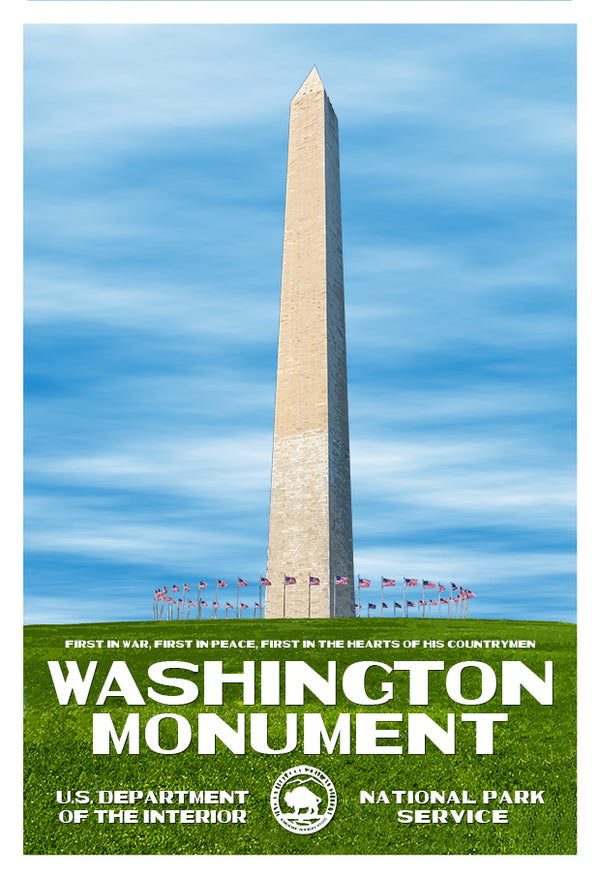Standing as a gigantic obelisk in the heart of Washington DC's National Mall, the Washington Monument is a proud commemoration of the nation's first President.
Designed by Robert Mills and completed by Thomas Casey in conjunction with the U.S. Army Corps of Engineers, the Washington Monument was completed in two phases. From 1848-1854, a private Washington National Monument Society chose Mills' design and began raising money for its construction, beginning with its cornerstone, a 24,500-pound block of pure white marble.
For its time, it was an ambitious, expensive, and some might say audacious design, which created several complications during its construction. The geometric layout of the city's streets and green spaces reserved a place of prominence for the monument, with an intersection of lines radiating out and south from the White House, west of the Capitol.
A Challenging Task
Around 1854, with support and funds running out, construction ground to a halt. In 1861, Mark Twain described the unfinished obelisk as “a hollow, oversized chimney.” Public support was drawn more towards efforts around the Civil War than creating an expensive monument for a president long gone. Then from 1876-1884, public construction finally began anew when President Ulysses S. Grant authorized construction to resume the project until the monument was complete.
Built to resemble an Egyptian obelisk, the idea was meant to evoke the timelessness of ancient civilizations. It beautifully captures the respect, awe, and gratitude we as a nation feel for our most essential Founding Father.
When it was completed on December 6, 1884, some 36,000 blocks of marble led to the monument holding the title of the tallest structure in the world at the time, standing at just over 555 feet. Workers placed a 9-inch aluminum pyramid atop the tower of white marble to finish off the regal structure. Following the dedication ceremony, over 10,000 people climbed the 900 steps leading to the top of the monument. Today, an elevator makes the trip much easier, with over 800,000 visitors to the monument annually.
In 1910, the city of Washington D.C. passed a law restricting the height of any buildings in the city, thereby ensuring the monument will forever remain the tallest structure in the nation's capital. It is a fitting tribute to the leader known as “the Father of His Country.”
George Washington's political and military leadership proved indispensable to the founding of the United States. Outlasting Britain's superior military might, he rallied people from each of the thirteen divergent states as commander of the Continental Army. Then, as President, his outstanding leadership provided a great precedent for others that would follow him. The Washington Monument serves as a stunning symbol; a constant reminder of his monumental achievements.
Click here to see the Washington Monument poster.
Rob Decker is a photographer and graphic artist who had the rare privilege of studying under Ansel Adams in Yosemite National Park when he was just 19 years old. Now, Rob is on a journey to explore and photograph all 61 of America's National Parks. He's creating WPA-style posters to help people celebrate their own national park adventures — as well as encourage others to get out and explore!
Join the growing community of 75k+ National Park enthusiasts to receive insider deals and updates.
Source: https://national-park-posters.com/blogs/national-park-posters/the-washington-monument-first-in-war-first-in-peace-and-first-in-the-hearts-of-his-countrymen

